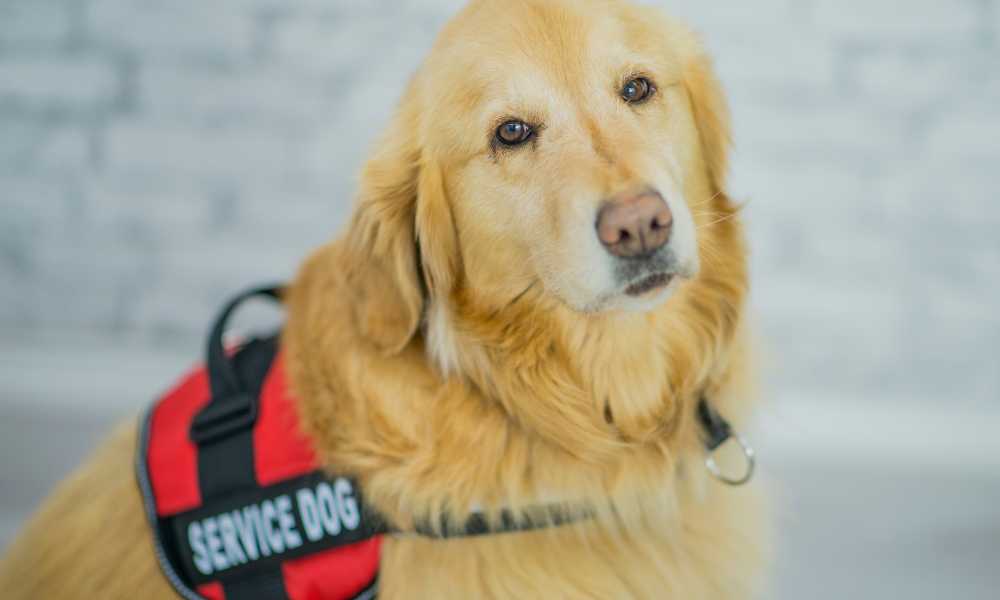There’s a big difference between guide dogs and emotional support animals – both are a wonderful addition to their owner’s lives, but guide dogs are rigorously trained to complete tasks like opening doors, retrieving items, and serving as their human’s eyes and ears, which is no easy feat. It’s hard not to see a working doggo and be in complete awe of their intelligence, patience, and loyalty; but it’s the thorough training process that will really earn your respect. As a nod to the dogs who make life possible for individuals with disabilities, here’s a brief recap of what these incredible canines go through to become the life-changing companions they are.
Most guide dogs are essentially designated at birth to be trained as such, but not every pupper makes the cut. Trainers are looking for a number of qualities like intelligence, willingness to learn, a good memory, the ability to concentrate, and great health (among others.) But even if a dog possesses these qualities, they aren’t a shoo-in; potential guide dogs can’t have an extreme reaction to other dogs and cats, or nervous or aggressive tendencies. Once they meet those qualifications, they’re then tested to assess their self-confidence, as only the most confident dogs can handle the pressure of both training and becoming a guide dog.
Typically, training lasts about 4-5 months (we definitely expected it to be longer!) – but it’s not your usual obedience training. When teaching guide dogs, food is never used as a reward because the animal can’t be distracted in the hopes of getting a treat once on duty. Instead, praise or other reward systems are used to encourage proper behavior. What do they learn to qualify as a guide dog, you ask?
- How to walk. Guide dogs have to learn to walk in a straight line, to the left and slightly ahead of their owners. They cannot succumb to distraction.
- Stopping at anything elevated, meaning curbs and stairs. A skill that is absolutely necessary when it comes to safety. They’re also taught to stop at overhead obstacles, like tree limbs.
- Selective disobedience. Possibly the most fascinating facet of guide dog training. Dogs learn how to handle themselves around traffic, busy intersections, and other potential dangers so they know not to continue walking if their owner is heading toward harm’s way.
- Navigating obstacles. Dogs must consider their handler when obstacles are present, which becomes difficult in small spaces. Through reward and correction, the trainer eventually teaches the guide dog that they should never enter a space that is too narrow or low for their owner.
Once the trainer feels these things (and other necessary commands) are second nature, they do their best to pair the dog with the right owner so ensure they live a safe and wonderful life together. And, as a friendly reminder: always ask to pet these professional pals, because any distraction could be dangerous to their human.
If you or someone you know has had their lives changed by a guide dog, we’d love to hear more on Facebook!



